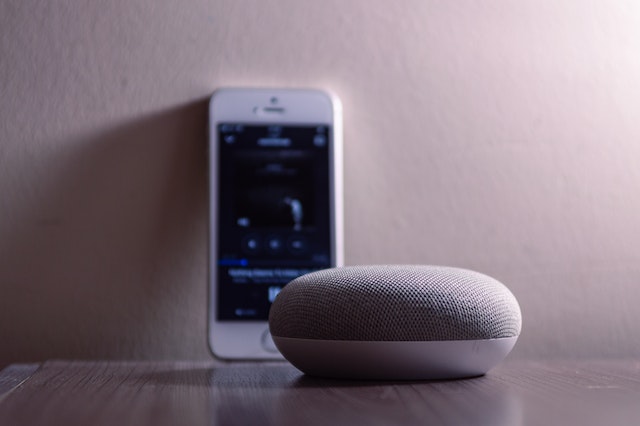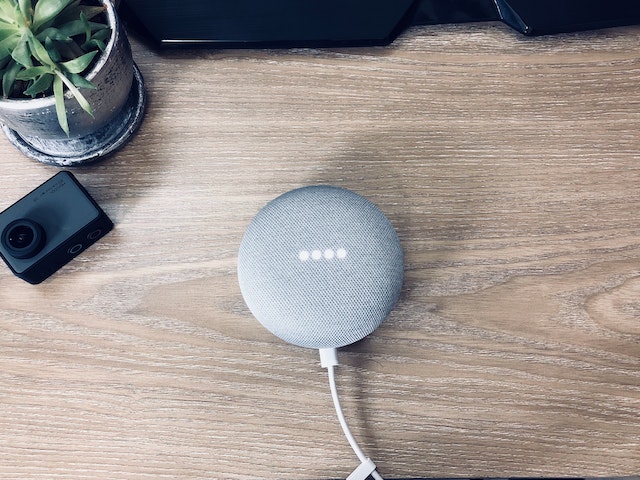The Next Frontier of Payment Processing: Voice Commerce and Smart Speaker Payments

The world of online commerce is constantly changing and evolving. One of the most recent evolutions in payment systems is the addition of voice commerce (v-commerce) and smart speaker payments.
Voice commerce works exactly as it sounds. Consumers can use their voice to direct their smart speakers to make seamless, hands-free transactions from their favorite stores. No computer or smartphone required. New voice payment possibilities continue to grow as this technology landscape expands.
Discover how voice commerce works, current smart speaker shopping trends, and expected future behaviors throughout this article.
Reshaping Purchases with Voice Technology

What Is Voice Commerce?
Voice commerce refers to the process of conducting transactions through a voice-enabled smart speaker, such as Siri or Cortana. These smart devices serve as the bridge between the user and various e-commerce platforms to allow customers to search for items, research pricing, and even complete orders all through voice activation alone. In 2022, customers cited the speed and ease of use of voice shopping were the top two primary reasons for using voice commerce over traditional shopping methods.
The Current State of Voice Commerce
Voice commerce is still very new, and thus, is currently going through a rapid adoption and growth phase by technology users. At the end of 2021, a survey found that people ages 18-34 were most likely to have used voice shopping before or were most interested in trying it. Additionally, men were more likely to have tried voice shopping compared to women.
However, regardless of age and gender, voice commerce is continuing to rapidly expand year over year as evidenced by v-commerce revenue. While voice commerce sales sat around the $2 billion mark in 2018, it has since reached the $20 billion threshold as of 2022. The trend continues to gain momentum, with 2023 expected to end the year even higher.
Increasing Accessibility
One of the biggest supports for this emerging new technology is its accessibility. As a principal software engineer from Adobe pointed out, “V-commerce has the potential to transform the retail industry, making it more accessible to people with disabilities, elderly people, and those who are unable to use traditional e-commerce platforms due to language barriers or a lack of access to a computer or smartphone.” The emergence of voice commerce opens doorways for those who find traditional shopping difficult, yet may not have adapted to online shopping either.
The Role of Smart Speakers

Payment Technology
An essential tool for using voice commerce is obtaining a smart speaker. These devices are built both to understand conversational tones and commands, as well as interface with the internet.
In fact, the widespread adoption of smart speakers in households is a large part of voice commerce’s success. Already, 65% of 25-49-year-olds interact with these devices every single day, making voice commerce a relatively easy new behavior to pick up. However, for those of an older generation that are less likely to regularly interact with smart speakers, voice commerce may never become as widely popular as it is with Gen X, Millennial, and Gen Z generations.
Security
Of course, a natural question that arises with the discussion of voice commerce is whether this transaction method is as safe as paying directly online or through a physical Point of Sale system. Payment processors and e-commerce sites have taken many steps to ensure voice shopping is equally as safe as mobile checkouts. Voice shopping is completed through tools such as mobile wallets and digital payment processors (like Stripe or PayPal) which encrypt your personal and financial information. Voice shoppers can make their purchases with confidence, knowing their information is being handled with care.
Additionally, for those worried that voice transactions might be too easy and thus lead to accidental checkouts or children in the household making unauthorized purchases, many smart devices have added additional measures. Amazon’s Alexa, for example, offers an optional, additional step of requiring a voice passcode before a transaction is completed, preventing any accidental purchases.
Satisfaction
The reviews are in, and users are universally happy with smart speakers at a satisfaction rate of 93%. Beyond general satisfaction with the devices, it is reported that 80% of consumers who made a purchase using voice commerce were satisfied with their experience as well. The consistency and success of these purchase methods will continue to lead to their adoption across the country.
Future Trends and Opportunities

Personalization
Perhaps one of the core reasons voice shopping continues to grow among consumers is the personalization aspect. As Anjali Vishwa, a business development writer explains, “With virtual assistants, businesses can create a more personalized experience for their customers by using data to anticipate their needs and preferences. For example, if a customer frequently orders a certain product, a virtual assistant could proactively suggest a repeat purchase.”
With 71% of consumers already expecting a personalized shopping experience, voice shopping will become a key asset for businesses to build relationships with their consumers. Voice shopping personalization can be a versatile tool to build upon brands’ existing loyalty programs.
Research
Though easy shopping functions like re-ordering a customer favorite is the natural first step toward voice commerce adoption, signs are showing customers are also doing more. According to Forbes, 51% of commerce shoppers are using their voice assistants to research products as well. This means voice shopping also can be another impactful avenue for new brand discovery, especially important for the growth of small and mid-size businesses.
TV Voice Assistance
While using smart speakers to make shopping purchases, sight unseen, may seem like a big leap for some consumers, others are expanding the smart devices they are shopping with. Some smart TVs are now also able to assist with shopping research and checkout. TV-assisted shopping rose from 126 million in 2021 to 500 million in 2022. Though it is still far less popular than smart speaker shopping, it is a technology worth keeping an eye on.
Making the Most of Payments Today

With voice commerce projected to exceed $30 billion by 2024, business owners should begin considering their own payment offerings. First and foremost, businesses considering adding voice shopping to their checkout methods should ensure they offer a broad range of payment methods. Diversifying payment methods, such as utilizing the PayPal or Braintree payment processor plugin from Payment Plugins give consumers more control and confidence in the brand. These different payment processors will also allow for more chances at technological advancement as new payment methods emerge.
For business owners on WordPress, start expanding your payment offers with easy-to-install payment plugins.

